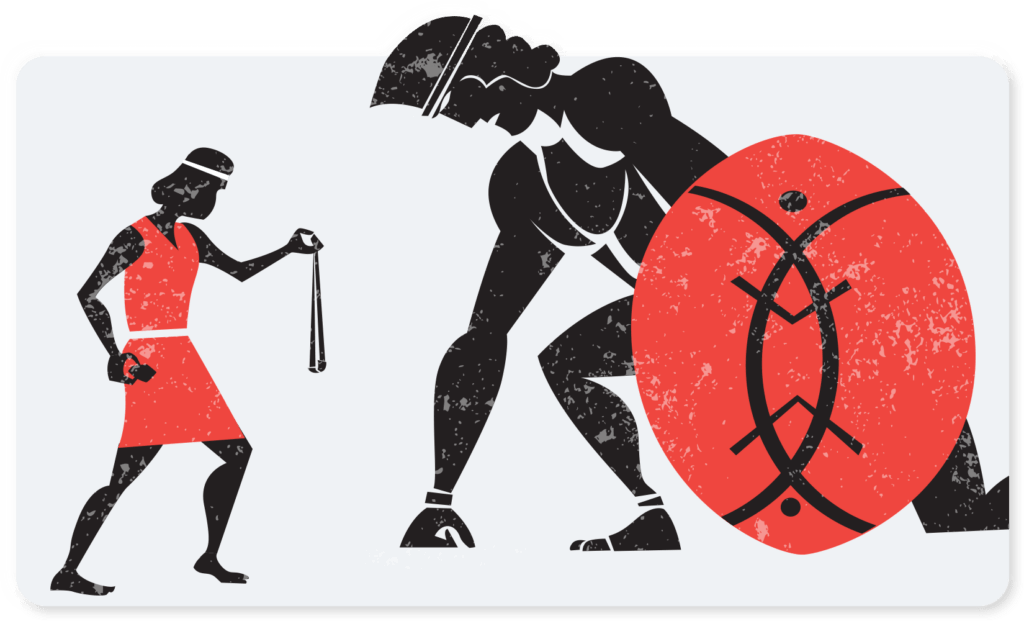Before we talk about Nogin, let’s talk about Amazon. You may have heard of them. Started by a guy named Jeff Bezos who wanted to sell books online. Ecommerce has become a standard for many American consumers, but back in 1994, when Amazon started, the idea of buying something over a cumbersome computing device that beeps and boops when you start it was about as alien a concept as civilian space travel.
It turns out that more than a couple of decades later, ecommerce has become a norm for American consumers. Today, you can purchase just about anything online, from groceries to household appliances to anything that can be shipped in a box. Oh, and the same guy who started Amazon has since retired and become a civilian astronaut who likes to wear cowboy hats. Welcome to the 2020s.
How is Amazon Beating the Competition and Who Can Stop Them?
Just as Walmart drove out Mom and Pop businesses during their rise to brick-and-mortar dominance, Amazon has become a seamlessly unstoppable force in the ecommerce world. They may not have a technical monopoly on selling goods online, but their monolithic business has virtually every advantage over independent brands trying to scale and grow their ecommerce business.
Amazon and its third-party merchants encompass 43.5% of digital spending in the United States in 2021, an increase from 41.8% in 2020. Unfortunately, their dominance will most likely continue to grow as the decade progresses. Independent retailers operating on their own cannot match the convenience or prices Amazon offers. Since they have fulfillment centers across the country, they can offer free, two-day shipping at affordable rates for both their merchants and customers. They have billions invested in research and development to ensure they integrate the latest ecommerce technology to make their shopping experience optimal for their customers.
Although customers enjoy the Amazon shopping experience, merchants and sellers are beholden to Amazon’s exorbitant referral, seller, FBA, and shipping fees. Although sellers may sell a ton of inventory on Amazon’s marketplace, the retailers rarely win. Amazon’s referral fees range from 6-45%, along with other expenses like their 3pl fulfillment that shrink their profit margins to a fraction of what they could be.
How Can Retailers Compete? The Problem With Staying Independent and Growing an Ecommerce Brand
Independent online brands have been between a rock and a hard place for too long. If they sell independently on their website, they must manage their inventory, hire ecommerce experts to oversee marketing efforts, purchase expensive SaaS, find a practical fulfillment solution, invest in research and development, and manage the countless other tasks needed to run an online brand successfully.
Operating a simple ecommerce website can be profitable and scalable when brands are smaller. They can steadily make a name for themselves and target their consumers with ads or invest in PPC campaigns to drive customers to their websites. They may waste money along the way to test campaign strategies and connect with their ideal customers, but as long as they are mindful of costs, they can steadily grow their brand and lower acquisition costs. However, once many independent brands reach the $1-2 million annual revenue mark, they are faced with a grim reality. They can not maintain profitability.
Independent brands handling their own online marketplace face numerous challenges that destroy their margins, so they can never make it to the next level. They are forced to utilize inflexible, slow, and expensive enterprise systems, such as Salesforce and Magneto. They must not only license the SaaS but hire dedicated specialists to use the costly tool and hope they do a good job.
Often, independent brands don’t have the budget to purchase the SaaS, team, and services needed to even remotely compete with Amazon. Most people instantly go to Amazon when they want to make an online purchase. If they consider buying the same product on another marketplace, they will inevitably get it from Amazon because they offer cheaper products shipped faster 49% of the time. In fact, 53% of consumers start their online shopping on Amazon.
Amazon doesn’t have to invest in PPC, SEO, social media campaigns, and other marketing efforts since they have superior brand recognition and a magnetic marketplace. They’re already the default option for most online shoppers. Customers can quickly set up an account and enjoy one-click purchases for whatever products come to mind that arrives in a couple of days. It’s hard for any independent brand to compete with that level of convenience and selection.
However, their third-party merchants will invest in Amazon advertising to get their products prime real estate in search results for various competitive keyword queries. Amazon doesn’t need to invest in Direct-to-Consumer (DTC) campaigns to sell its products. They have thousands of third-party merchants paying them for prime positions to sell their products, and if they make a sale, they take another cut from the pie.
How Amazon Always Wins

Amazon keeps its vendors’ data under lock and key for a reason. Third-party vendors must bend the knee and pay the fees to earn the privilege of selling their products on Amazon. While vendors hustle to optimize their listings and invest to beat other vendors, it’s a win-win-win for Amazon. They collect all user data on their shoppers’ behavior, leverage their analytics to improve the Amazon shopping experience, continuously scale and grow their business, and rake in endless fees from vendors advertising and selling on their platform.
Third-party vendors are pitted against one another to push inventory while their profit margins are snatched in various fees to Amazon. They can’t even install a tracking pixel on their Amazon landing pages to learn about their customers. Third-party vendors aren’t much more than medieval peasants renting a plot of land and handing their profits to their feudal lords.
The Problem With Trying to Compete With Amazon On Your Own
If brands want to go the indie route, they will need a considerable budget to get their ecommerce brand up and running. Unfortunately, they must rely on multiple SaaS solutions to improve their shopping experience, oversee re-platforming their storefront to adhere to the constant innovations in online commerce, invest in multiple marketing channels to reach their customers, hire expensive and in-demand marketing talent to oversee and launch their campaigns, warehouse fulfillment, customer service, and so much more.
When it comes to marketing, extensive testing is needed to reach a profitable return on ad spend. Since independent brands start from scratch, they will need to begin with fairly open targeting and cast a wide net to narrow down their target audience and identify customer avatars.
The more money they spend, the more accurate they can assess their ideal shoppers. Still, the catch is they have to pay a lot of money not only on the social media and PPC budgets but also to the specialists maintaining and launching their campaigns. This leads to another problem where specialists operate in silos, and multi-channel marketing efforts are not integrated effectively.
For instance, strategists overseeing an Instagram campaign will need to manually chat with the PPC team to work together to improve campaign performance. It is not only an inefficient and ineffective way to approach marketing, but brands must pay for their team and marketing costs which will further eat into profit margins.
Even some of the biggest apparel brands globally are barely profitable, if profitable at all, due to the overwhelming powers of Amazon and big online retailers. Amazon offers more selection, better pricing, faster and cheaper fulfillment, and most Americans already have an account set up so they can purchase items will one click.
If you want to stay in control of your brand and fight Amazon’s monopoly over ecommerce, it starts with a smarter approach.
Plug Into Intelligent Commerce and Take the Headache Out of Running an Ecommerce Brand
If you want to fight against big retail, you’ll need the same tools as big retail. Nogin’s Commerce-as-a-Service (CaaS) technology is built on Shopify Plus and arms brands with the power of big data to fight big retail.
Each of our partners receives the infrastructure, tech, and specialist support to ensure their business grows. Our partners never have to worry about re-platforming again, and our partners do not need to invest in upfront costs to get started. Our approach to ecommerce allows our partners to liberate themselves from the endless responsibilities and oversight required to scale a brand. Stay in control and view your operations from our integrated dashboard and focus on growing your brand while we handle the rest.
To dive deeper into how Nogin solves profitability issues and allows our partners to scale faster and compete with big retail, download the second Coresight Research report.
Check out more of our in-depth ecommerce guides to learn the strategies to scale your ecommerce brand below:


